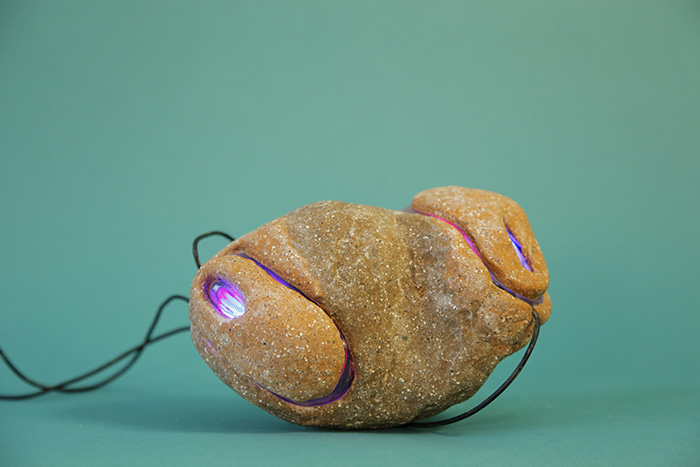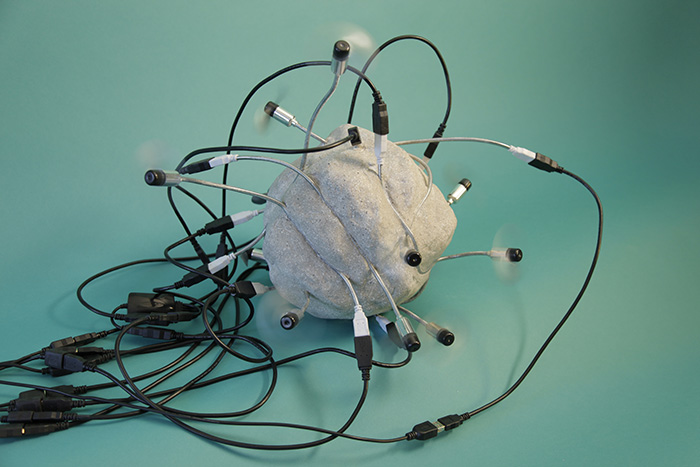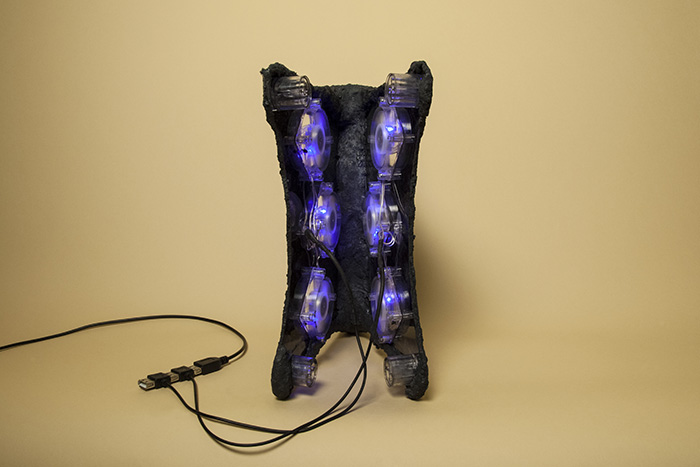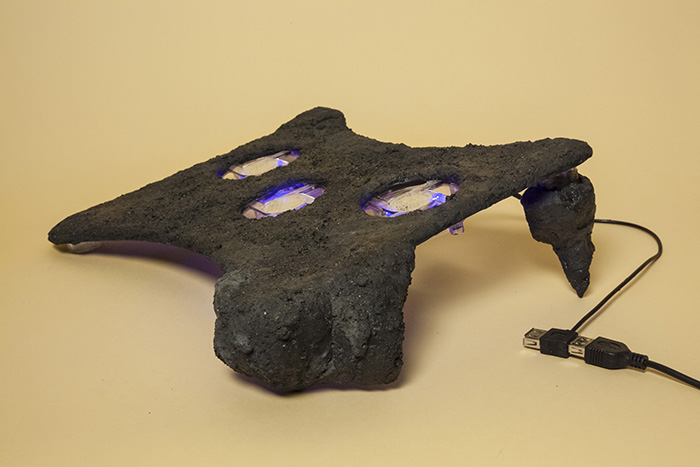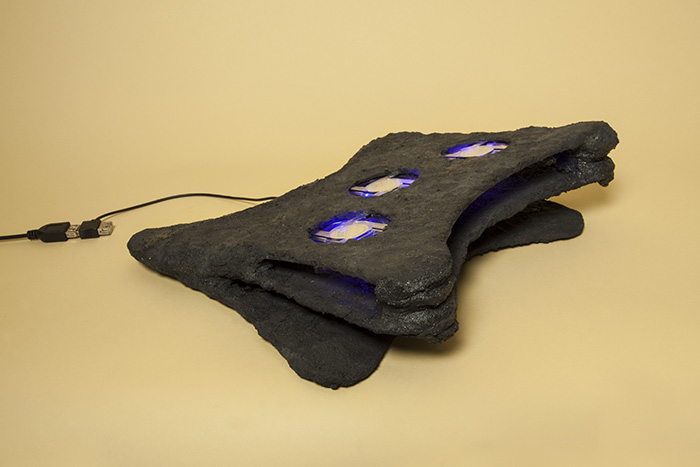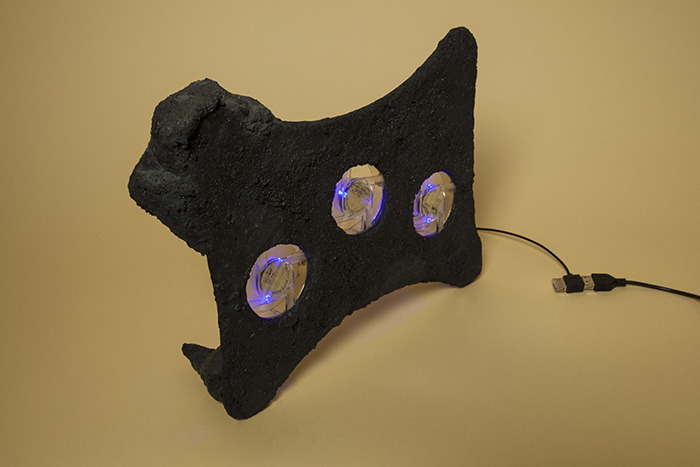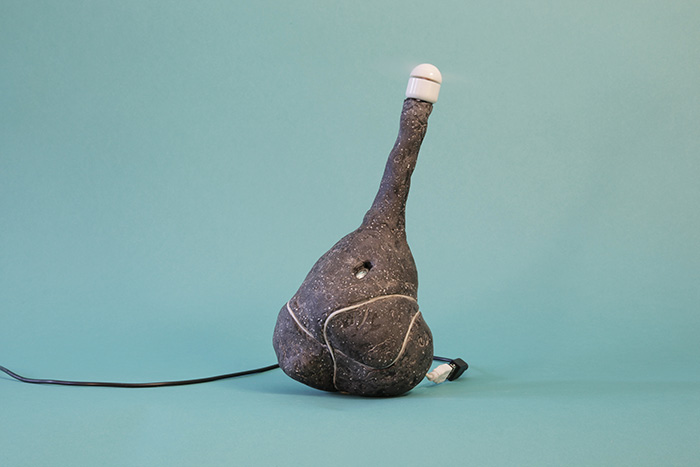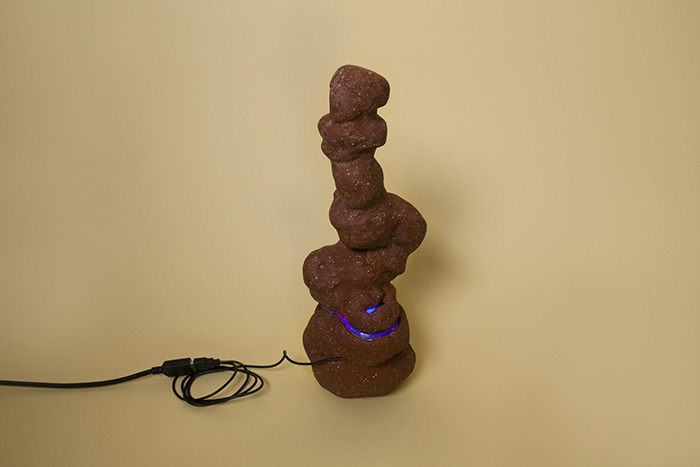My artwork investigates the materiality of digital culture, and the ways that our contemporary lavish lives are so dependent on the overlooked labor of lowbrow machines. E-Waste is a new sculptural investigation that incorporates a broad spectrum of USB-powered devices. The objects are partially encrusted with both “natural” and “man-made” environmental materials, yet these half-fossilized mutants continue to function, providing sources of light, sound, and movement.
Digital cultural mores privilege ever-escalating levels of productivity, which can only be achieved through ceaseless labor. This includes the labor of humans (whose actions are digitally captured across all realms of life) and that of machines (that need never rest). I recommend sympathy for the devices we exploit, on the grounds that we ourselves are becoming increasingly device-like, ensnared in compulsory productivity – whether we are “working” in the traditional sense for our own gain, or generating value for companies like Google and Facebook each time we conduct a web search or click “like.”
Such hyper-productivity results in gross over-accumulation. The sculptures in E-Waste offer a physical parallel to surpluses of big data by highlighting the counterpart surfeit in consumer media artifacts. These works also accentuate a second result of hyper-productivity: its environmental impact. While E-Waste suggests that cheap throwaway USB artifacts will outlive humans, these clusters and clumps confirm how affinities flow between objects and environment. In a nonhuman afterlife, the built environment extends an end to endless work, swarming, and securing the bodies of orphaned devices.
